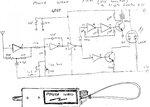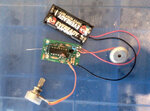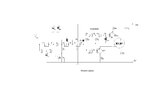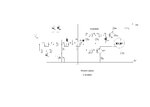dom444
Junior Member level 2

this is my personal design for a sensitive ac mains finder circuit this one is unique from anything that i have seen out there, you can very the sensitivity from touching the wire to picking up hum from 2 meters away or finding
cables through walls, it has a green led when powered up that goes red when picking up, it also gives an audible hum from the peizo has a pinpoint button and sensitivity control. I will post a vid when i can get a chance to make it
important will not work with all 4069 ic's I have to find my prototype and will let you know the markings. this is better than anything commercially out there and was inspired from the fact my son almost killed himself as a apprentice electrician while in a roof space.

cables through walls, it has a green led when powered up that goes red when picking up, it also gives an audible hum from the peizo has a pinpoint button and sensitivity control. I will post a vid when i can get a chance to make it
important will not work with all 4069 ic's I have to find my prototype and will let you know the markings. this is better than anything commercially out there and was inspired from the fact my son almost killed himself as a apprentice electrician while in a roof space.

Last edited:







